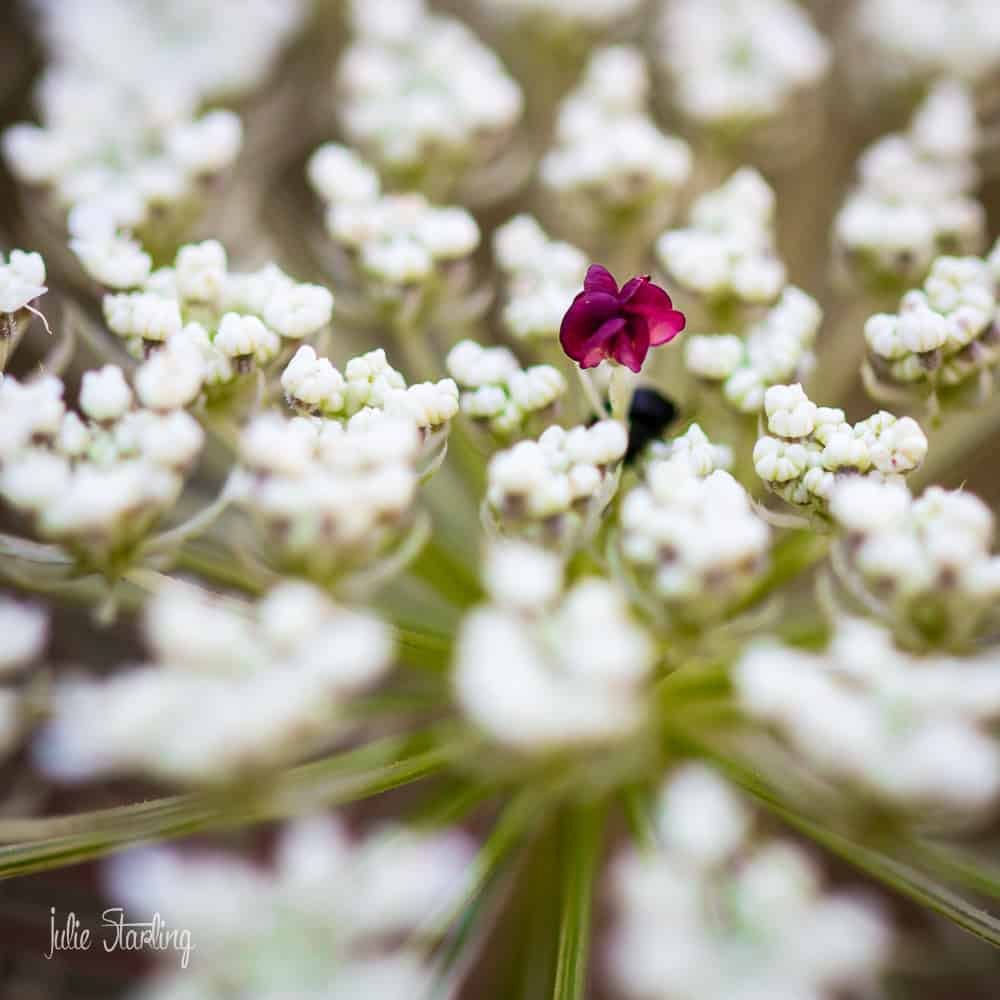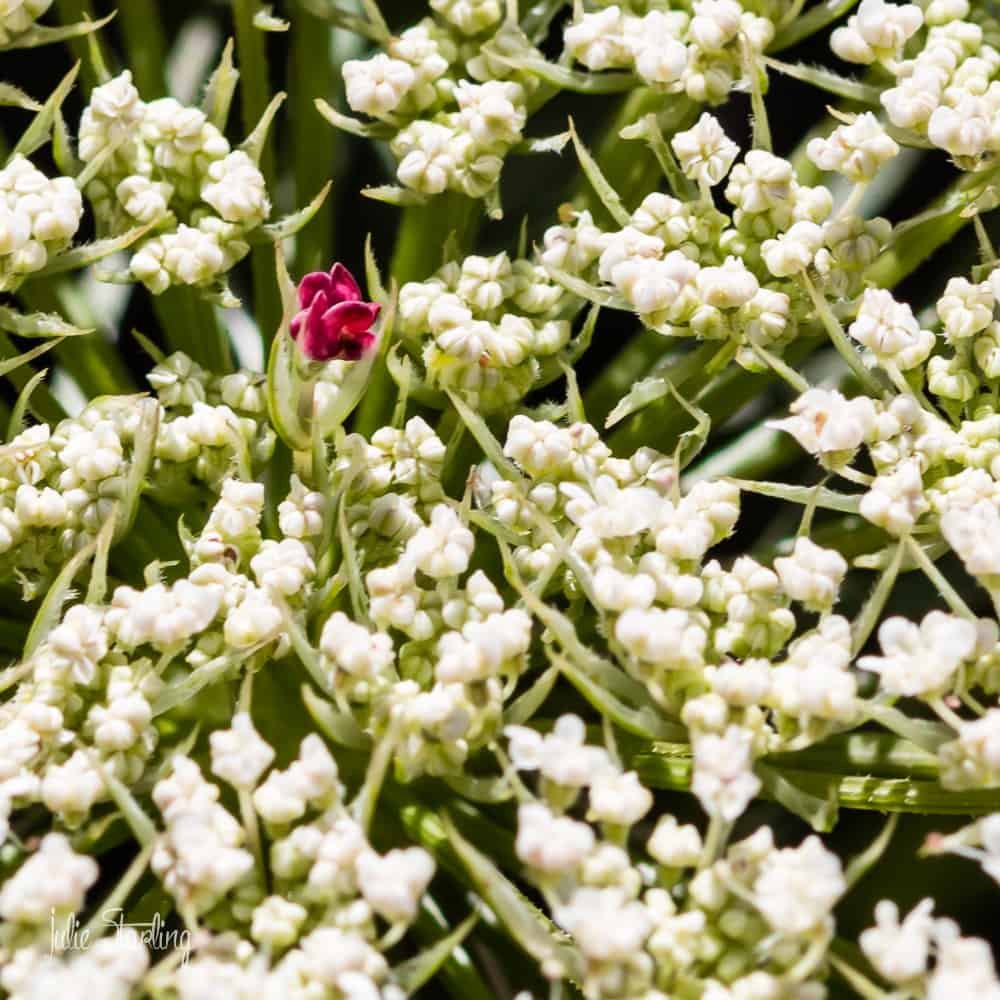Queen Anne's Lace, Wild Carrot 170/365
Queen Anne's Lace (Daucus carota, wild carrot) is named after Queen Anne of England or her great grandmother Queen Anne of Denmark. Both were lace makers. Typically the plant is a luster of small white flowers in dense umbels. However, some have a pink or purple floret just off center, slightly taller than the rest. Folklore says that it is the droplet of blood where Queen Anne pricked herself with a needle when making the lace.
Botanists have debated the mystery for 150 years. Some suspected it was a genetic oddity that had no service while some suspected that the colored floret tricks insects into thinking that a bug is sitting on the flower to attract predatory wasps hoping to snatch a quick meal. Another theory is that the floret entices insects to land to help pollinate the plant. While some sources say the function of the red floret is still not known, Wikipedia states that the tiny red flower, colored by anthocyanin (an odorless and flavorless flavonoid), is to attract insects.
Whatever its use, it was that red floret that I noticed in just a few of these flowers in the thousands that I've seen all summer all over the mountains, which attracted my interest in them. I would have otherwise overlooked them. They often make beautiful arrangements.
Queen Anne's Lace, Wild Carrot 172/365
The common carrot, Daucus carota sativus, was derived from Queen Anne's Lace, but the wild carrot is nothing like the common carrot. Like the common carrot, the wild carrot root is edible, but only when it's young, as it quickly becomes too woody for consumption as the plant ages. The roots of the wild carrot are white, and it smells like a common carrot when it's crushed.
The flowers are also edible however at your own risk! Wild Carrot is very similar to poion hemlock, which killed Socrates. So you should be absolutely sure before you indulge in eating Wild Carrot flowers. Deep fried carrot flower is considered a delicacy.
Though not poisonous, Queen Anne's Lace is considered toxic. Contact with the skin can cause an allergic dermatitis from the leaves. I've touched it many times and haven't had an allergic reaction that I know of yet.
This strange wild flower that I would have over looked had it not been for the single red floret in the middle of it is fascinating historically and medicinally. There are tons more interesting facts on the wild carrot found at http://www.carrotmuseum.co.uk/wild.html


That is really interesting!! I've never seen one of those before.